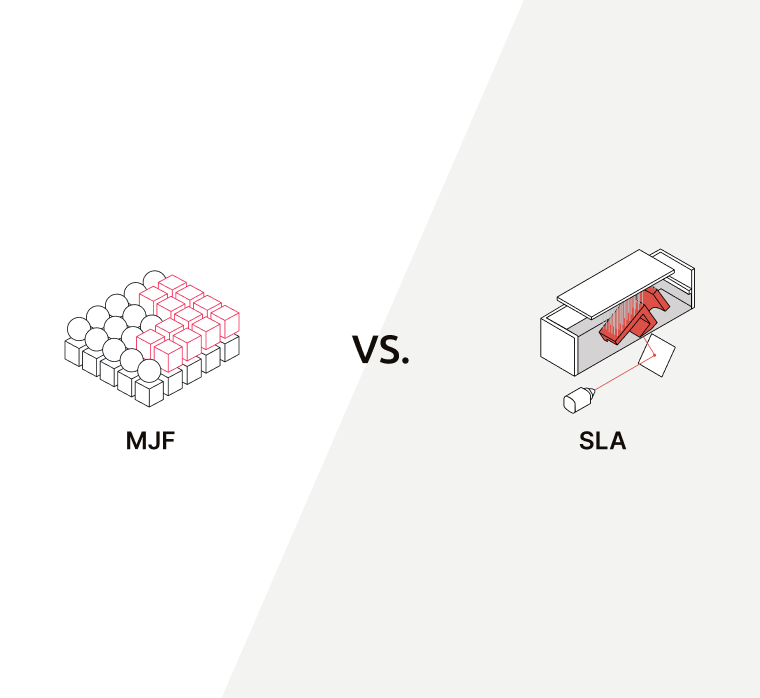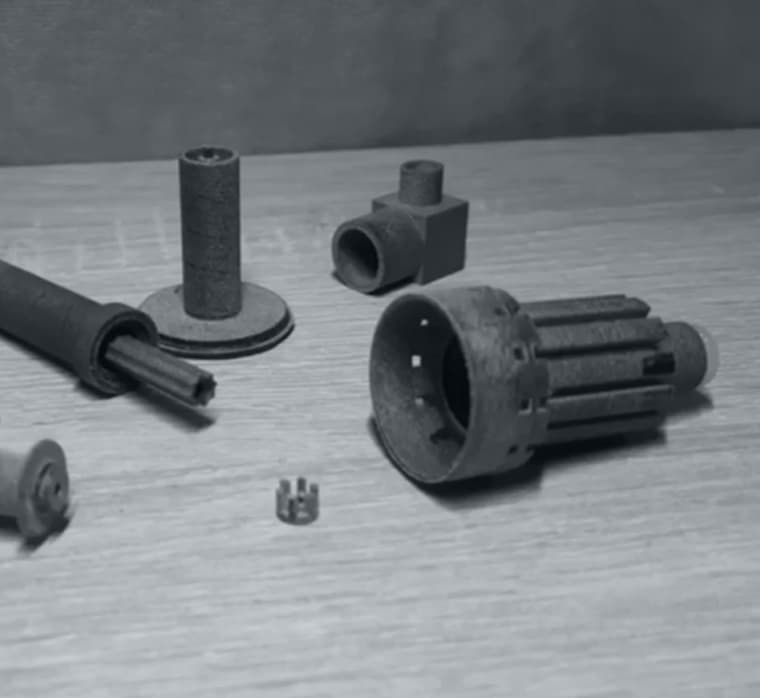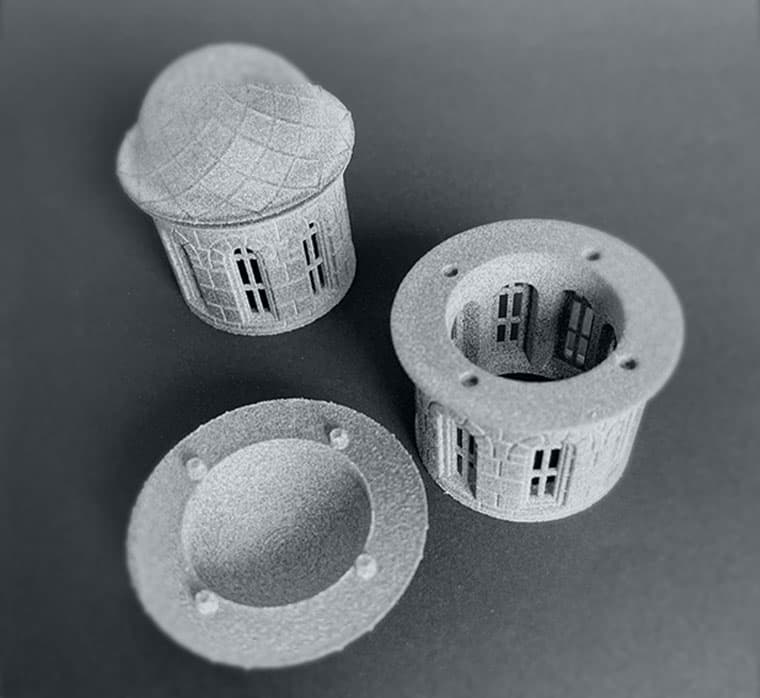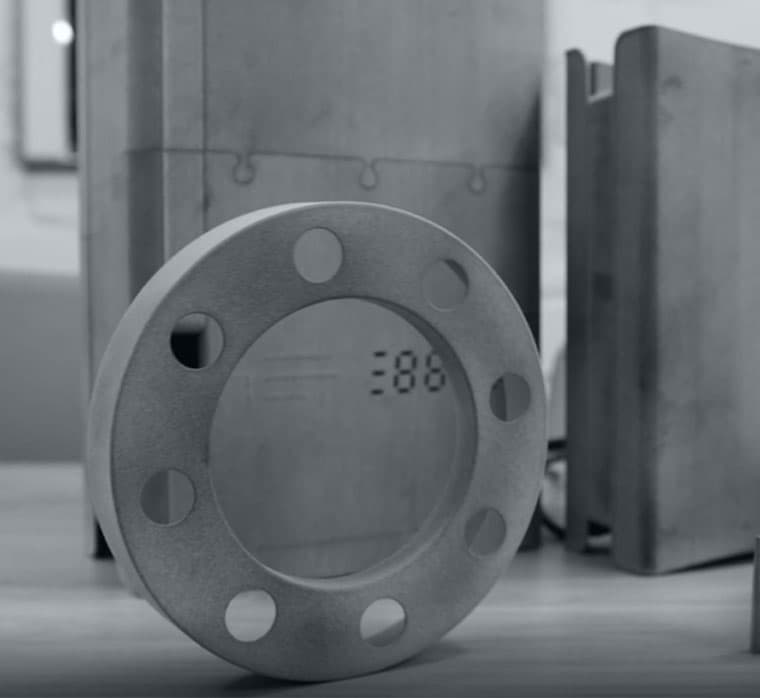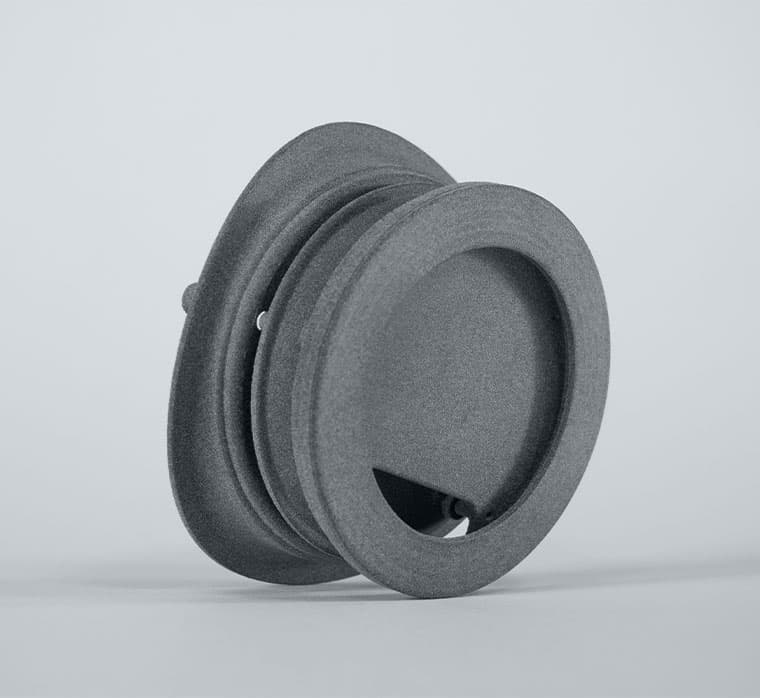HP MJF and SLA: Comparing 3D printing technologies
Two modern additive manufacturing technologies — HP Multi Jet Fusion (MJF) and Stereolithography (SLA) — have become the leading 3D printing technologies. Each has its own advantages and disadvantages. This article covers the major differences between SLA and MJF, allowing businesses to make informed decisions about their additive manufacturing needs.
HP Multi Jet Fusion (MJF).
HP MJF is an inkjet 3D printing technology where sintering agents in a powder bed are used to form a product. The procedure begins by applying a thin layer of powdered material to the work surface. The inkjet printing system then accurately reproduces the pattern by applying binding and melting agents to the powder. The thermal element then moves over the layer, melting the powdered material and turning it into a solid structure. This cycle is repeated for each layer until the final 3D object is formed.
MJF features
Speed and performance. One of the main advantages of HP MJF is its high printing speed. This technology can produce functional prototypes and end-use parts in far less time than traditional 3D printing methods and the ability to print multiple parts simultaneously increases line capacity. This makes the technology an attractive option for companies with high production requirements.

Material diversity. HP MJF supports a wide range of materials: nylon, polypropylene and polyurethane. This versatility allows users to select the materials that meet the specific requirements of their application and are most suitable for prototype, tooling, or finished part production.
High resolution. The technology allows for the printing of products with high detail (up to 1200 DPI) and layer thickness of 80 µm. This makes it possible to use MJF technology for the production of products with the smallest elements, as well as for the production of models with complex geometries, such as parts within parts, chains, or hollow structures without support structures.
Post-processing. Products printed on the MJF line usually require less post-processing such as sanding, removal of support elements, or finishing. This is due to the high surface quality achieved during the printing process. The products are usually ready to use or can be sandblasted.
Stereolithography (SLA)
SLA printing is a 3D printing technology based on the principle of creating parts from UV light-sensitive polymers and resins. The printing process (known as photopolymerization) begins by lowering a platform into a container of photosensitive liquid polymer. A laser spot irradiates the surface, causing the polymer to solidify and form a single layer of the object. After one layer is formed, the platform is raised to a distance equal to the thickness of the next layer and the process is repeated.
SLA features
Surface quality. SLA 3D printing materials create products with a high resolution and smooth surfaces. Because of the dimensional accuracy of SLA, the technology is used in projects where complex and fine details are important. It is in demand for the jewelry, dental, and medical industries.

Range of materials. The development of resin formulations has significantly expanded the range of SLA printing materials. Specialized material formulations now make it possible to print products with properties such as flexibility, transparency, and biocompatibility.
The cost of materials and equipment for SLA printing can be high. In addition, the printing process itself requires some expertise in 3D modeling and adjusting printing parameters.
Differences in technology
Speed and scalability. In the matter of speed and scalability, MJF has a clear advantage. The ability to print multiple parts simultaneously with high accuracy and speed makes it a suitable choice for industries that require mass production without compromising on quality.
Materials. Both technologies feature a variety of materials, but HP MJF’s open platform enables innovation and facilitates the introduction of new materials into the 3D printing process. This flexibility helps businesses stay at the forefront of material advancements and adapt to changing industry needs.
Application. Due to its precision, one of the primary applications of SLA technology is its use in prototyping and creating highly detailed models. MJF printing is used for industrial production of functional prototypes and final parts due to the high throughput, tolerance, and durability of the materials.
For users who prioritize speed, performance, and a wide range of material choices, HP MJF is the optimal choice. If precise measurements, intricate finishing techniques and smooth product surfaces are paramount, the incredibly fine layer thickness of SLA printing is a better choice. Both technologies have their advantages and disadvantages and the choice between them will depend on the specific requirements of the project.
